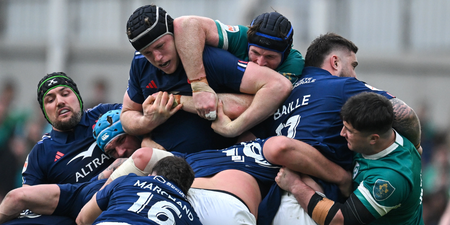That might sound dramatic, but it’s true.
Andy Farrell’s team selection for his opening game as Head Coach showed five changes to the one obliterated by New Zealand in Tokyo a few short months ago. Some of those decisions were taken out of his hands, Rory Best’s retirement for example, while others showed the ruthless nature perhaps required after a World Cup like Ireland’s, such as Rob Kearney’s absence.
In some ways, he landed in the middle of those calling for total overhaul and those who insist the core of that team is the one that seemed genuine contenders for the Webb Ellis trophy just one year ago. Two debutants in the matchday 23, one on the bench, doesn’t exactly scream change.
But he has to be careful.
World Rugby today confirmed that the seedings for the Pool Stages of the 2023 Rugby World Cup will be confirmed after this year’s November Internationals. That’s right, the pool draw for the tournament that takes place in three years will be decided on the form of the teams… Three years out from the tournament. It’s the way it has been for the past few tournaments, but it nevertheless makes Farrell’s job that bit harder.
The top 12 teams in the World Rankings all qualify automatically for the World Cup, with these teams split into three bands of four teams. It’s not looking too bad for Ireland at the moment… But it could look better. As it stands, the seedings would be as follows;
First Seed: South Africa, New Zealand, England, Wales
Second Seed: Ireland, Australia, France, Japan
Third Seed: Scotland, Argentina, Fiji, Italy
So, if the draw was taking place today, Ireland would land themselves in a RWC 2023 group with at one of South Africa, New Zealand, England or Wales. But, it’s not, and seeding isn’t everything. Ireland were seeded second in Australia’s pool in 2011 and came top. Japan were seeded third and topped Ireland’s pool last year.
Ireland still have 10 games to get themselves back into the top four in 2020. These are;
Six Nations
Ireland v Scotland
Ireland v Wales
England v Ireland
Ireland v Italy
France v Ireland
Summer Tour
Australia v Ireland
Australia v Ireland
November Internationals
Ireland v Australia
Ireland v South Africa
Ireland v Japan
The idea of a “four-year cycle” around a World Cup is bandied about a lot in rugby, and Rassie Erasmus’ South Africa largely debunked that theory a few months ago, but it has some merit when you consider the above. If Ireland were to have a poor Six Nations, struggle Down Under this summer and then manage only one win from three in November, all of which is entirely possible, not only would they fail to make top seeding but the potential for them to fall into a third seeding position is entirely possible.
It’s a complicated system that decides the rankings, were teams playing against each other effectively “trade” points. These points are calculated according to their relative standings in the rankings, which team is home or away and then the margin of victory.
It sounds unthinkable, but as it stands there are 5.22 rankings points separating Ireland (84.45 points) in 5th and Scotland (79.23 points) in 9th. If Ireland were to lose by less than 20 points, that gap would shorten to 1.56 points. If Ireland were to lose by more than 20 points, Scotland would leapfrog Ireland in the rankings, and Ireland would drop to 7th place. That’s only after one game this year.
These are nightmare scenarios, and it’s entirely possible Ireland will enjoy a much better season than they did in 2019. However, you can’t say that the Six Nations doesn’t matter, or that the games in the summer or November are “friendlies”. After all, if the World Cup is the be-all and end-all of success, as we’ve been led to believe, then Ireland’s chances will be massively affected by what happens this year.
















































